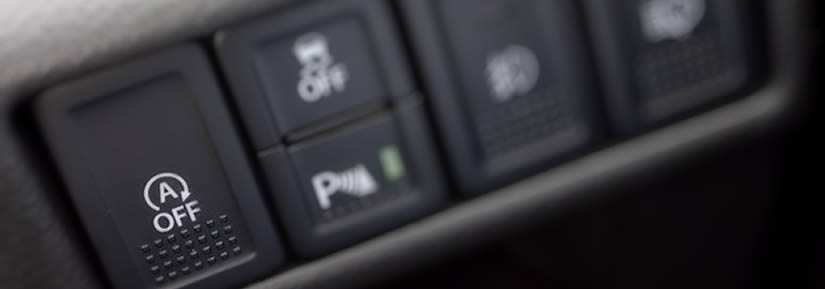Suzuki Vitara Stop Start Not Working
The Suzuki Vitara ‘ENG A-STOP’ is their version of automatic engine stop start system. It automatically stops and starts the engine without the requirement to operate the ignition switch or engine start/stop button. By automatically switching the engine off when the vehicle stops, it helps to reduce fuel consumption and exhaust gases.
Deactivating Automatic Stop Start
The stop start system is automatically activated each time the ignition is turned to ‘on’ or the engine start/stop button is pressed to ‘on’ mode. You cannot permanently deactivate the engine start stop system, but you can manually deactivate the system each time the vehicle is started by pressing the ‘ENG A-STOP’ button ![]() .
.
Automatic Engine Stop Start Fault
If the ‘ENG A-STOP OFF’ light flashes when you’re driving, there is a fault with the automatic engine stop start system.
Inducing Automatic Engine Stop
For manual gearbox versions of the Suzuki Vitara:
- Fully depress the clutch and stop the vehicle.
- While depressing both the clutch and the brake pedal, place the gear lever into neutral.
- Release the clutch pedal.
- The ENG A-STOP indicator light will illuminate in green
 on the instrument display and the engine will automatically stop.
on the instrument display and the engine will automatically stop.
For automatic and TCSS (twin clutch) gearbox versions of the Suzuki Vitara:
- Stop the vehicle and keep the brake pedal firmly pressed.
- Place the gear selector into the ‘D’ position.
- The ENG A-STOP indicator light will illuminate in green
 on the instrument display and the engine will automatically stop.
on the instrument display and the engine will automatically stop.
Suzuki Vitara Stop Start Not Working
If your Suzuki Vitara automatic engine stop start system isn’t working, it’s almost certainly due to one of the many conditions that must be met for the system to operate. Whilst some of these conditions can be met by driver intervention, certain other conditions cannot be altered to induce automatic engine stop. The Suzuki Vitara automatic engine stop will not operate under the following conditions:
- The driver’s seat belt is not fastened.
- The driver’s door is not closed.
- The engine bonnet / hood is not properly shut.
- The engine has been started with the bonnet / hood open.
- The accelerator pedal has been depressed.
- For automatic or TCSS vehicles, the gear selector has been left in a position other than ‘D’ or ‘N’.
- Automatic engine stop start has been manually deactivated by pressing the ENG A-STOP button
 .
. - There is a fault in the system and the ENG A-STOP light
 is flashing.
is flashing. - Engine coolant is too low or too high. Engine stop will not operate when coolant temperature is below approximately 10°C and above 100°C
- Vehicle battery charge is too low. Engine stop will not operate when the battery charge is below approximately 75 percent. Low battery charge is one of the most common reasons for automatic engine stop not working, particularly in cold weather.
- Vehicle battery temperature is too low or too high. Engine stop will not operate when the battery temperature is below approximately -5°C or above 60°C
- The brake booster vacuum pressure it low. Vacuum pressure helps the driver when applying vehicle brakes. If the brake booster vacuum pressure is low, it will require more force applied to the brake pedal to obtain normal braking ability. Note; brake booster is inoperative when the engine is stopped automatically. To initiate engine stop and to prevent automatic engine start, keep the brake pedal firmly pressed.
- For vehicles with automatic air conditioning, the blower speed selector is set to ‘on’ and the inside of the vehicle has not yet reached the set temperature.
- For vehicles with automatic air conditioning, the defrost switch has been set to ‘on’.
- If during or after the ABS or ESP system have activated.
- During first vehicle use. The vehicle must travel a short distance first to initialise the system.
- After an automatic stop, the engine restarts automatically but the vehicle has not exceeded 3 mph (5 km/h).
- When the vehicle has stopped after reversing.
- The vehicle is being driven in manual mode (automatic vehicles).
- On automatic or TCSS vehicles, it has been stopped on a steep hill.
- The diesel particulate filter (DPF) is being regenerated (diesel models only).
- External temperature is too cold, approximately -5°C or too hot +35°C
Dashboard Warning Lights
To find out more about those dreaded warning lights, see Suzuki Vitara dashboard warning lights.
